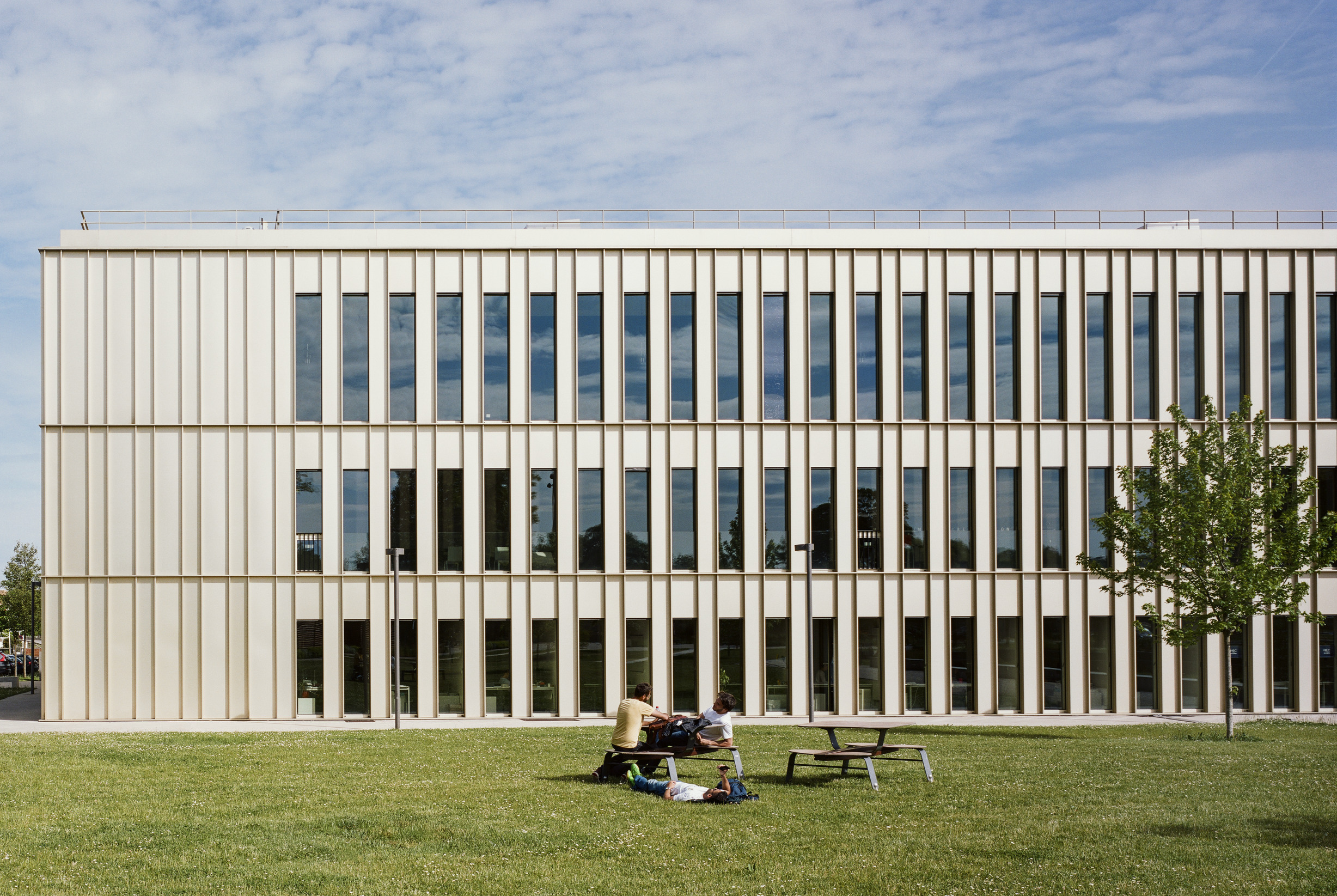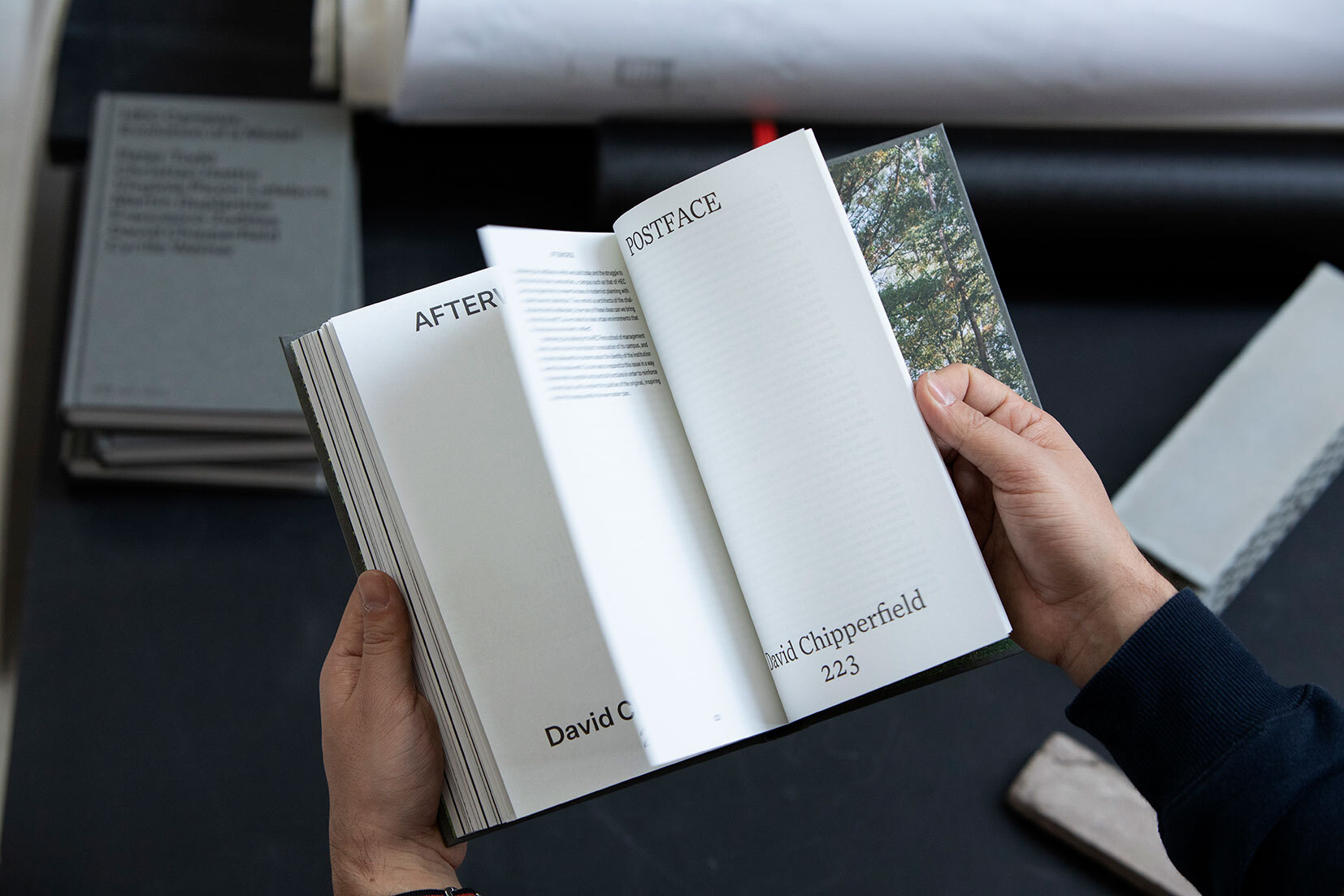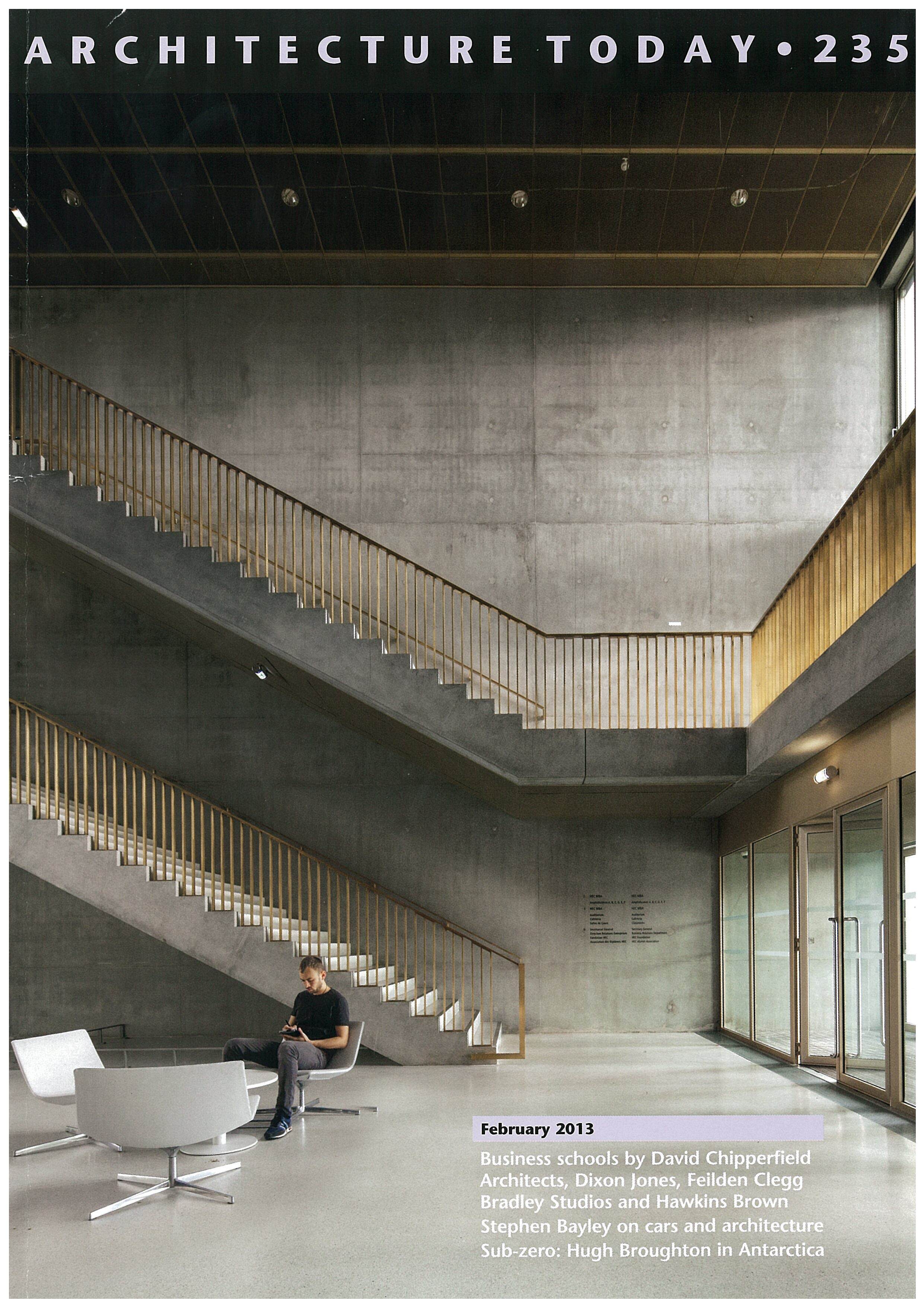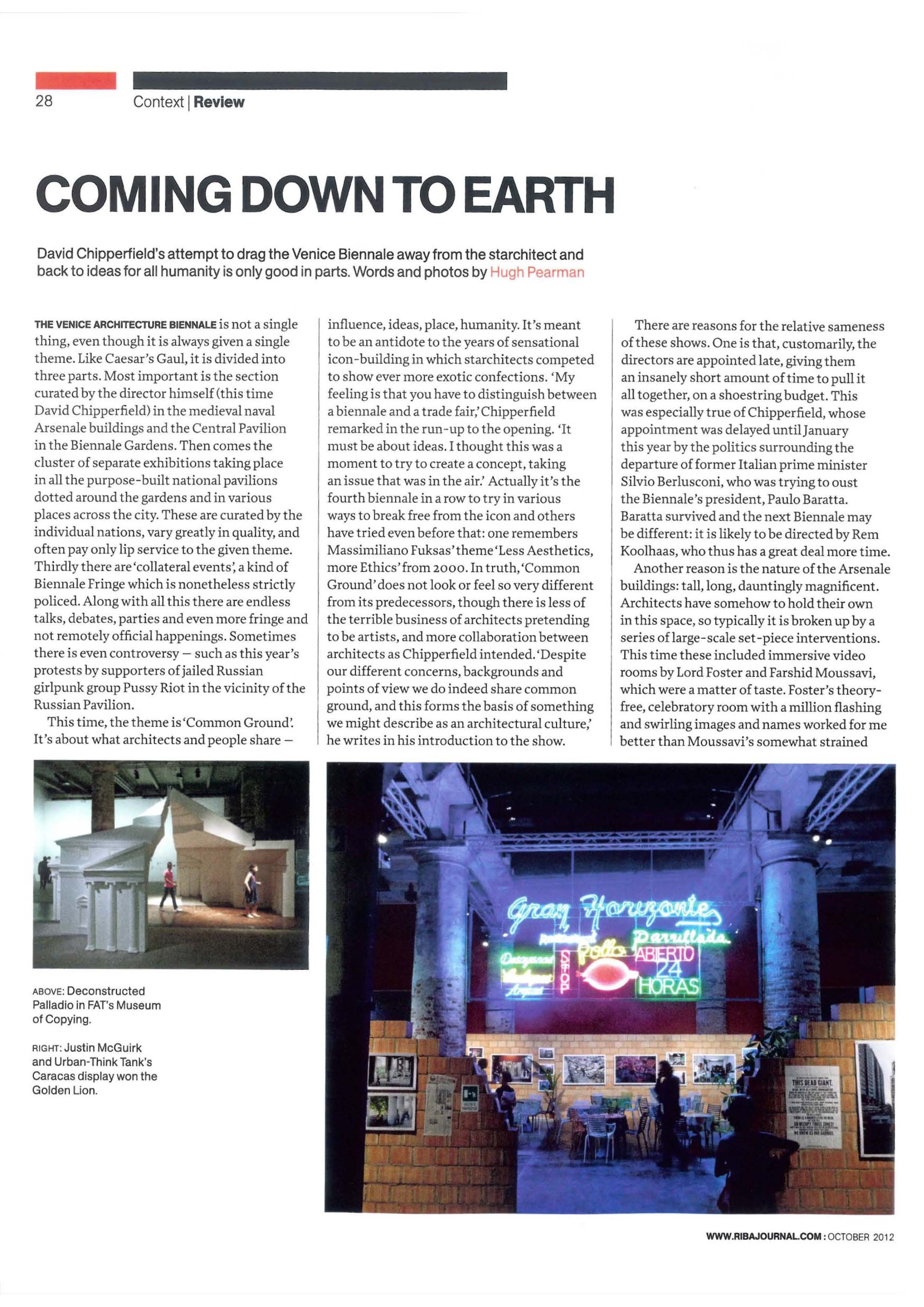The London architect recounts for 'A'A' his battle for an architectural culture based on shared values: erudition, responsibility and reflection.
Curator of the 2012 Venice Architecture Biennale, David Chipperfield, known for his prestigious cultural projects, has nevertheless not turned his back on 'ordinary' constructions. The London architect recounts for AA his battle for an architectural culture based on shared values: erudition, responsibility and reflection.
L'ARCHITECTURE D'AUJOURDHUI. Â Let's start with Venice, You were the curator 01 the 2012 Architecture Biennale. What was the point of the show? What message were you trying to get across?
DAVID CHIPPER FIELD. The title I chose for the show was -Common Ground", A while before, I'd been sitting in a late night bar in Madrid with Jacques Herzog, We'd both been presenting entries for a competition, and we were "downloadingâ over drinks, The way Herzog & de Meuron and David Chipperfield buildings look couldn't be more different. But, it was clear, as we talked, that we're struggling with the same predicament whatever our individual styles ...
AA. What predicament?
DC. Struggling with "the beast", trying to shape a decent, valuable, socially responsible architecture from the values of societies that tend, increasingly, to see architecture as a form of marketing, and architects as "brands"; struggling with what many of us fear is a decline in architectural culture and with the rise of corporate, management and money culture.
AA. Isn't architectural culture effectively dead? lsn't it all about marketing and image today, with architecture serving as a form of three-dimensional graphic design?
DC. Well, yes, that's the danger, But, what I wanted to say in Venice, both within and without the walls of the profession, is that surely we can admit, together, that there is an architectural culture, a common architectural culture. As architects, can we talk more among ourselves about what matters, how to work together, for example, on the realization of master plans, rather than hiding away in our individual offices and studios doing our own thing? There's too much talk - bitchiness even- about style, about the way different buildings look and not enough dialogue between architects and certainly not between architects and society. I look at the technology, the structures of many new buildings and even when these are directed by some of the most superficially radical architects, they're often much the same; too many architects - even the very best architects- seem too hung up on matters of style, And, in doing so, I think we're in danger as a profession of speaking to ourselves, in our own self-referential language; sometimes it can seem as if we're a bunch of actors let loose on a stage, all speaking our parts at the same time, but without an audience.
AA. Letâs go back to the struggle with the "beast". When I say architectural culture's dead, it's because over the put 30 years weâve seen architectural practices learning to act like business corporations, speaking the language of business management and designing buildings â giant shopping malls in city centres, for example, or huge speculative office buildings â that are undermining the very culture of cities themselves and making the architect seem more like a business executive than an artistâŚ
DC. Architects aren't artists. They have to be responsible. They can't stand on the edge of society, or even outside it and comment on the state of society as an artist is free to do. But, yes, I agree: many architects have been diverted in to becoming business people and their studios have become business companies. I'm well aware that even those who try to carry the flag for architectural culture are used as a marketing tool for clients. We're used to helping win planning permissions; we're seen as "adding value" to projects that are essentially commercial propositions; and. in all of this, we know that we can't realty talk about a love of architecture or a fear architectural culture; if we did, commercial clients would think we were off our heads.
AA. I remember the first public talk I went to at the RIBA in London. The speaker was Denys Lasdun (1914-2001; architect of the Royal National Theatre, London). He spoke, in beautiful English â no professional jargon â about contemporary architecture and brought wonderful ideas and images to play from Epidaurus and ancient Greece, through the early Modern movement to today. It was everything one expected from an architect: culture, knowledge, learning, a real command his chosen professionâŚ
DC. Well, yes, you couldn't talk to many clients about Epidaurus today. I wouldn't advise it. I remember James Stirling telling us to keep to the facts when speaking to clients. âNever talk funnyâ, he said, meaning stick to talk about plans and details, but never talk about history or culture. Having said this, there have been architects, only recently, who have sold a big idea, a culture of their own making, not just to biennales, or to the cultured clients to museums and galleries, but to government departments and even the biggest commercial organizations and corporations, I'm thinking of Norman Foster and Richard Rogers whose remarkable marriage of hi-tech, Buckminster Fuller-ish thinking, hippy social positioning and love of advanced technology made sense to corporate clients, not necessarily for the ideas behind the marriage, but for the big, useable space hi-tech offered.
AA. That was a one-off experience in recent architectural history?
DC. It was certainly a special moment to witness a very powerful design idea, a way of thinking and seeing being translated into major buildings around the world in both the commercial and cultural sectors. But today, most design âand ideas about design- are fixed or frozen early on in projects, and especially for commercial clients, because of the needs for fixed costs, for instant results and for certainty's sake. Most clients don't want to live in any doubt, so a lot of architectural effort has become about managing doubt. And so architects come up with fixed and slick images. We rarely get time to think, to experiment, to play...
AA. Although, looking around your London studio, it looks as if you, at least, do get to think and play...
DC. Well, yes, the floor we're on is what I call the studio, with the office downstairs. Up here, we can all meet, think, draw, make models and do the things I think architects should do. The computers are downstairs where detailed designs are resolved. I spend a lot of time making sure the young architects, especially, come upstairs away from their computer screens and talk together and shape buildings, or parts of buildings with their own hands.
AA. Has there been I project that has let you think, given you the necessary time to play
DC. The Neues Museum in Berlin, without a doubt. That was a 10-year project, and it was all about ideas, while the experience of working with so many talented people across so many disciplines led up to the thinking behind Venice and the "Common Ground". In Berlin, there was a common ground between architects, conservationists, curators, historians, politicians, critics, the media and the public at large. In everything we proposed, or did, as architects, I had to convince not just the client we proposed, or did, as architects, I had to convince not just a client, nor even a city, but an entire country! The Neues Museum was a hugely important project â emotionally and politically as well as architecturally â for Germany; it was all about dialogue and ideas. For me, it was like doing a PhD, an educational experience. It was a turning point, the pivot, in my career as an architect. In the end, I learned how worthwhile architecture can emerge from the involvement of many people and even opposing ideas.
AA. Is there something special about Berlin? You have an office there.
DC. Yes, the Berlin office is 150 people; London is 130. I'm building a house for my family in Berlin as I'm beginning to spend about half my working time there. Germany has an articulate society; it's very reflective. In London, the vast majority of buildings are rushed up to make as much money as quickly as possible, but in Berlin people, including clients, want to know what a building means. So, with the Neues Museum, there was a big debate about how far the building should be recreated as it was before the Second World War; informed discussion, and an intelligent battle of ideas concerned with what the museum means today, led to a design that, while careful of history, is really about the present, about life culture and ideas in contemporary Berlin and modern Germany. But Berlin is special in that it's a big city, a spacious city of just three million people when it really wants to be a city of six million. So, it has a quality you don't find elsewhere in Europe; there's room for manoeuvre, new things can happen and they don't have to be commercially driven down to the last cent. I really like Mitte [a district in central Berlin], for example. Here, a young artist can find an old building and, over a weekend transform it into a place to show her work in a setting done up by her friends. The same artist couldn't possibly do anything like that in London; here, virtually every last inch of real estate has been eaten up by landlords and developers, and rents are absurdly high. And, even if money wasn't a problem, that young artist would be troubled by planning laws, health and safety laws and any number of issues that have made such spontaneity in London almost impossible. Berlin offers a certain freedom, and people here care about ideas.
AA. Radical ideas too?
DC. Yes. One of the things many of us miss in architecture as the world, and our professional world, has become more corporate, is the lack of radical ideas that might affect the profession, and our cities. We talked about the way that Richard Rogers and Norman Foster did turn radical ideas in to a successful architecture, but very few of us are ever really radical. There's room for intellectual debate in architecture, even in London, but architects tend to be part of âthe systemâ. We're all compliant, all part of the system, even if weâre reluctantly compliant. Look at Rem Koolhaas: I'm fond of him and he has wonderful, radical ideas about all sorts of things to do with architecture. Cities and societies, but at the same time he's the architect of CCTV (Chino Central Television building, Beijing). I'm not picking on Rem, by the way: architects are all a part of a Faustian pact. If an architect wants to be as free as an artist, no one is standing in his or her way; he or she just wonât get to build, and if you want to build, you have to sign the pact. Having said this, we can offer a certain amount of resistance, resistance to stylistic tendencies, resistance to intellectual laziness and, of course, we can try to persuade clients to think a little harder too, and even - although very, very rarely â to spend more on a particular building project.
AA. I can see from models and drawings in the studio that youâre working on a number of speculative projects. Thereâs an office building in Paris, a high-rise residential tower in Londonâs Docklands. Why not say âNoâ to this king of purely commercial design.
DC. Partly vanity, partly income, partly the feeling that the economic system we're saddled with, globally, isn't going to go away very soon, so you just jump in and have a go. I'm not sure; I mean how do you make people fall in love with a speculative office block? I'm not sure if you can, but we have to have the confidence to believe that we can design a good speculative off ice block, I certainly don't want to spend my whole time designing museums and galleries, no matter how special these can be; I'd like to roll up my sleeves and get my hands dirty designing the kind of everyday buildings that are needed in the city. Look at the riverside skyline along the Thames [seen from the windows of David Chipperfieldâs 12th-floor studio next door to Waterloo station]. Most of the buildings of the last 50 years are dreadful: I'm sure we can do better, so why not give it a try?
AA. But, your heart is really more in museums and galleries...
DC. We've built up an expertise in museum design over the past 25 years, so it would be odd of us not to keep on working in this field, and I do love art; museums, at their best, too. But one of the challenges is to see if we can design buildings â city buildings- for everyone that are as thorough in their own way as museums.
AA. I was talking to Ălvaro Siza, not so long ago, and he was saying how, even in Portugal, it was getting hard to use the beautiful materials that have made is public buildings so wonderfully crafted and emotionally warm because it is too expensive to do so. Have we got to the stage where riche materials are just for the rich?
DC. I'm very fond of Ălvaro Siza, and his work has been a big influence on me. I'm not just interested in the idea of the materiality of buildings: it's what I believe in. Architects can talk all they like. They can posit theories. They can make interesting drawings. But, in the end, it's the building, the solid physical architecture that truly matters. Recently, we've found ourselves, as many architects have, working at the "luxury" end of the market I say âluxuryâ, putting the word in quotes, because the use of rich materials combined with a âfive-starâ way of life is certainly not my idea of true luxury, nor, I know, it is Ălvaro Siza 's belief. For me luxury is far more about being with my family and friends in a simple house by the sea, cooking simple food and drinking good local wine. But yes, this is a long way of saying that I wish we could build to the standard you're thinking of for everyday buildings for ordinary people. We can't.
AA. But, you can do something else with basic materials, canât you? Looking at some of your new buildings, like the Saint Louis Art Museum, I see you using concrete coffering, for example to create greater depth and shade in your work.
DC. That's true. It's interesting - well, for me anyway- that the concrete coffered ceiling in the Saint Louis project means that the building can be lit by daylight alone during the museum's opening hours, for 70 per cent of the year. I don't think curators will use it this way -they'll want more light- but, yes. I like the idea of the architecture working hard, if unobtrusively, to create moods heightened by light and shade. It can be done.
AA. But thatâs architecture, isnât it: the âmasterly, correct and magnificent play of volumes brought together in lightâ (Le Corbusier), or, as John Ruskin once wrote, âI do not believe that [eve] any building was truly great unless it had mighty masses, vigorous and deep, of shadow and mingled with [its] surface.â
DC. Well, that's certainly what I believe, although it can be hard to achieve. But one example proves, even in a small way, why architecture with its play of volumes and light and shade matters. In Paris we've designed a new building for HEC (Ăcole des Hautes Ătudes Commerciales). We thought of the building as a gateway to the school. And now that it's built visitors are no longer told to look out for the "Holiday Inn" sign before turning into the campus, but to look out for the new building which has âwell, I hope it has- some of the qualities with materiality and light and shade you've mentioned.
AA. One thing we havenât talked about it âsustainabilityâ. In recent years I can hardly think of a studio Iâve visited â almost anywhere in the world â where architects havenât lectured me about the âSâ word. You donât; you talk about architecture insteadâŚ
DC. No, we don't discuss it. Good architecture is sustainable. It's built to last. And, if it's good architecture, future generations will do their best to keep it standing. They may change a building's use but the architecture will endure. Too many architectural practices talk about 'sustainability' as a smoke screen to hide behind when their work is unimaginative or simply second-rate. Of course, we aim to design thoughtfully and responsibly; that's what architects are meant to do.
AA. Good architecture endures. I hear youâre working on the redevelopment of Mies van der Roheâs Neue Nationalgalerie in BerlinâŚ
DC. I admire Mies van der Rohe very much and he's been a major influence on my work. But, being appointed to care for his National Gallery is a privilege; a responsibility, too. The building was designed to last, but it can be difficult to use. Especially at ground floor level where few curators have ever really known how to subdivide the space elegantly or efficiently. Also, the building you see on the ground gets hot in summer, cold in winter; the underground galleries though, are good. Our job is to work carefully with Mies van der Rohe, with the eyes of Berlin watching us as we do so. In the end, you won't notice much difference: good architecture does endure! But for us, what matters most is that we're accepted as part of the culture of Berlin, a part of its architectural culture.
AA. What next?
DC. We carry on, trying wherever we are in the world, or whatever the project, to create architecture and not what you call âgraphic designâ or marketing, or a âbrandâ. I know we can all be egotistical, but I think there's far too much emphasis placed on the role of the individual architect. I'd quite like it if people could walk by and say âthere's a great buildingâ rather than there's a building by Zaha Hadid, Rem Koolhaas, Herzog &de Meuron, Renzo Piano or even David Chipperfield. In the end, it's the architecture - the buildings, the planning and making of cities- that matters; so we have to push for a real architectural culture, as I tried to say at Venice, and one that we all share.Â
By Jonathan Glancey
L'Architecture d'Aujourd'Hui January 2013



